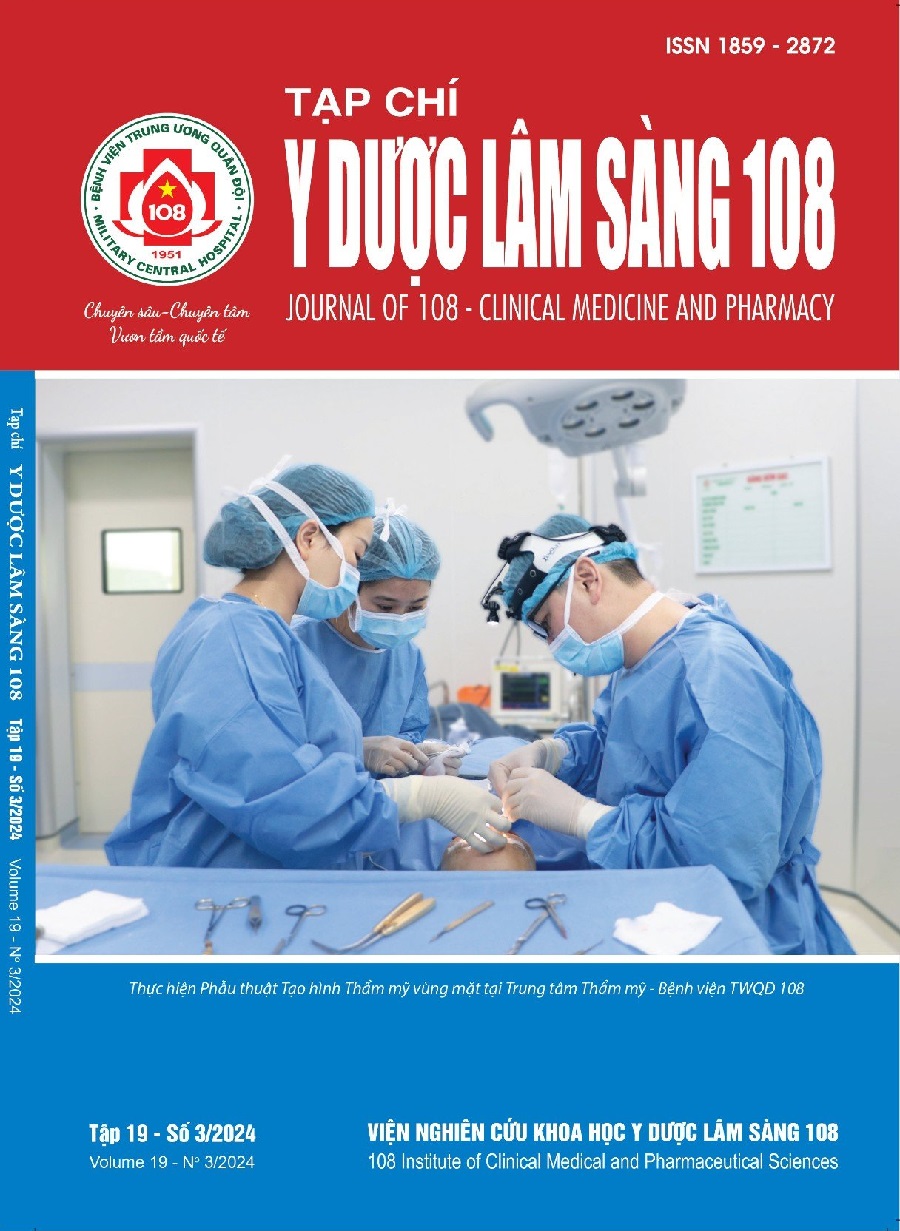Combining cranioplasty with ventriculoperitoneal shunt for treatment the hydrocephalus after decompressive craniectomy: Analysis of 34 patients
Main Article Content
Keywords
Abstract
Objective: To analyze our database concerning the optimal timing of cranioplasty and ventriculoperitoneal shunt (VPS) regarding postoperative complications. Subject and method: This is a retrospective cohort study including 34 patients of hydrocephalus following decompressive craniotomy (DC) who underwent simultaneous and staged procedures of cranioplasty and VPS from January 2018 and January 2023 with at least 6 months of follow-up. Patient characteristics, clinical findings, and complications were collected and analyzed. Result: Thirteen patients with hydrocephalus underwent simultaneous procedures and 21 patients underwent staged surgeries. The overall complication rate was 35.3%. Patients who underwent simultaneous cranioplasty and VPS suffered significantly more often from complications compared with patients who underwent staged cranioplasty and VPS procedures (46.1% vs. 28.6%, p<0.05). Conclusion: The present data suggest that patients who undergo staged cranioplasty and VPS procedures might benefit from a lower complication rate.
Article Details
References
2. Vedantam A, Yamal JM, Hwang H, Robertson CS, Gopinath SP (2018) Factors associated with shunt-dependent hydrocephalus after decompressive craniectomy for traumatic brain injury. J Neurosurg 128(5): 1547-1552.
3. Honeybul S, Ho KM (2014) Decompressive craniectomy for severetraumatic brain injury: The relationship between surgical complications and the prediction of an unfavourable outcome. Injury 45(9): 1332-1339.
4. Gudeman SK, Kishore PR, Becker DP et al (1981) Computed tomography in the evaluation of incidence and significance of post-traumatic hydrocephalus. Radiology 141(2): 397–402.
5. Sahuquillo J, Arinan F (2006) Decompressive craniectomy for the treatment of refractory high intracranial pressure in traumatic brain injury. Cochrane Database Syst Rev 25(1): 003983.
6. Gill JH, Choi HH, Lee SH, Jang KM, Nam TK, Park YS, Kwon JT (2021) Comparison of postoperative complications between simultaneous and staged surgery in cranioplasty and ventriculoperitoneal shunt placement after decompressive craniectomy. Korean J Neurotrauma (2): 100-107. doi: 10.13004/kjnt.2021.17.e20. PMID: 34760820; PMCID: PMC8558027.
7. Heo J, Park SQ, Cho SJ, Chang JC & Park HK (2014) Evaluation of simultaneous cranioplasty and ventriculoperitoneal shunt procedures: Clinical article. Journal of neurosurgery 121(2): 313-318.
8. Schuss P, Borger V, Güresir Á, Vatter H, Güresir E (2015) Cranioplasty and ventriculoperitoneal shunt placement after decompressive craniectomy: Staged surgery is associated with fewer postoperative complications. World Neurosurg 84(4): 1051-1054. doi: 10.1016/j.wneu.2015.05.066.
 ISSN: 1859 - 2872
ISSN: 1859 - 2872
